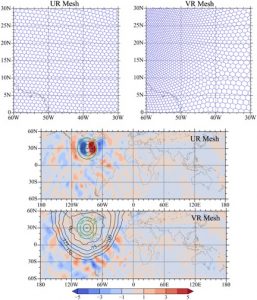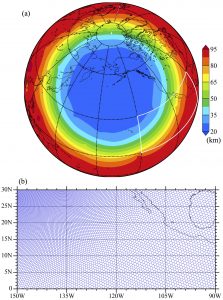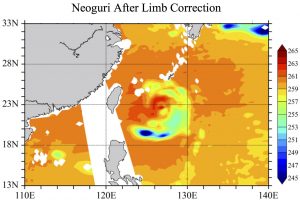Key points:
• Errors in global shallow water model simulations with the uniform resolution (UR) and variable resolution (VR) meshes are quantified;
• Error signals propagate as gravity waves, which, in the case of this study, can circle the globe about every two days;
• Adjoint sensitivities indicate that, in the experiment with VR mesh, solutions errors are generated outside the area with refined resolutions. To ream more.
Key points:
• A Python-driven MPAS-A dynamic-core-only is tested;
• The tangent linear and adjoint models of the MPAS- A are developed and their correctness is verified;
• The relative sensitivities obtained by using the MPAS adjoint model shows interesting results for a baroclinic instability test case. To ream more.
It’s been 40 years since microwave temperature sounders started to observe the Earth. Observations from microwave temperature sounders are critical for various areas of basic and applied science, including climatological studies, numerical weather forecasting, and extreme-weather monitoring. However, the cross-track scanning approach of temperature sounders can conceal weather signals in raw observations, which is problematic. To ream more.


